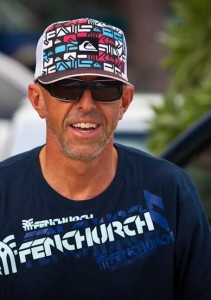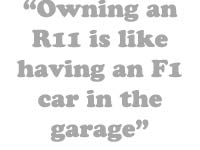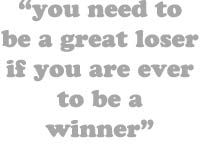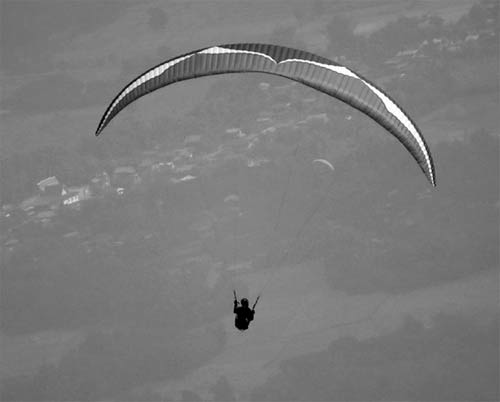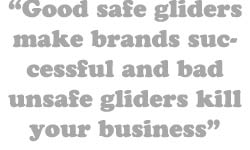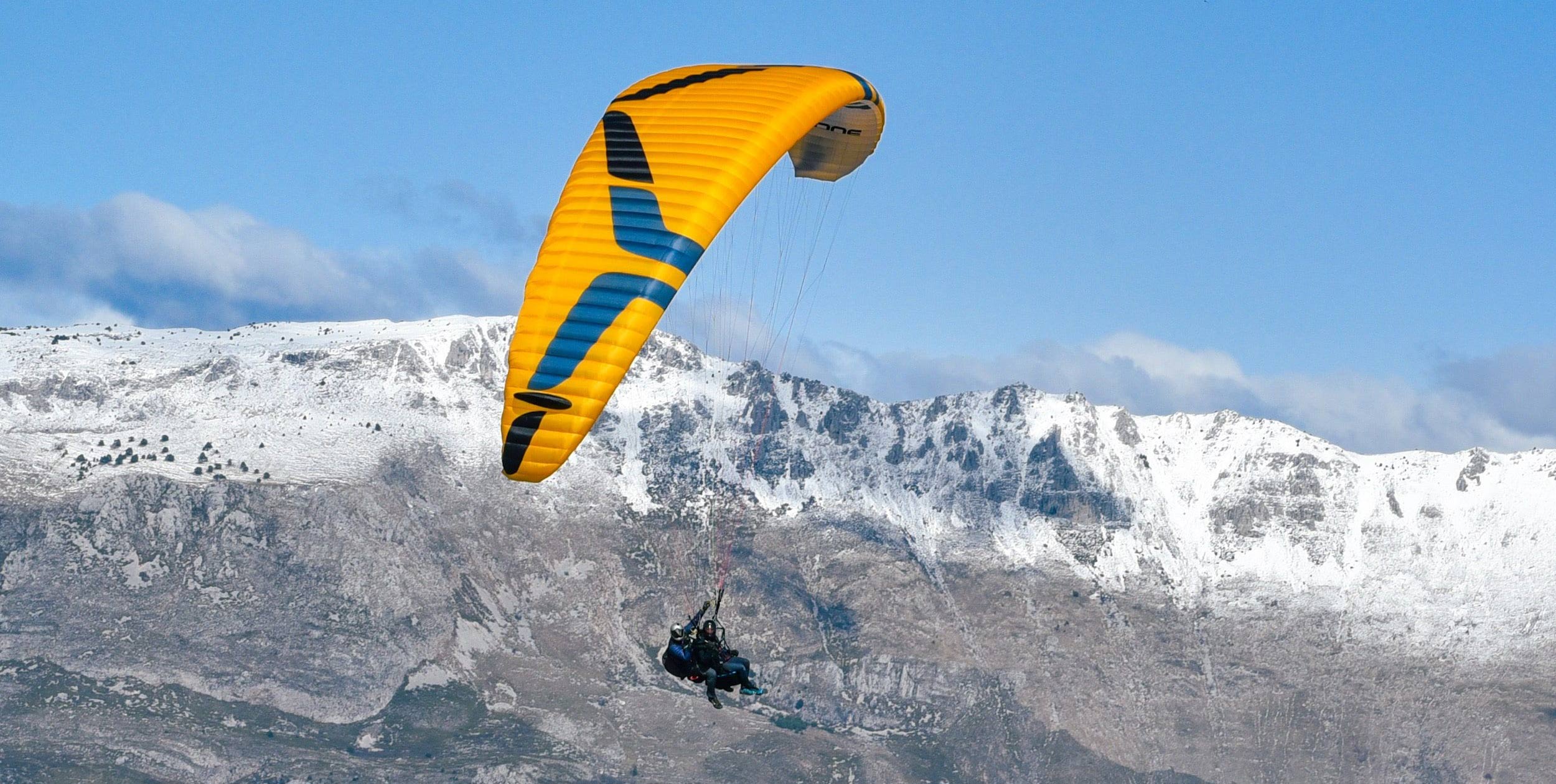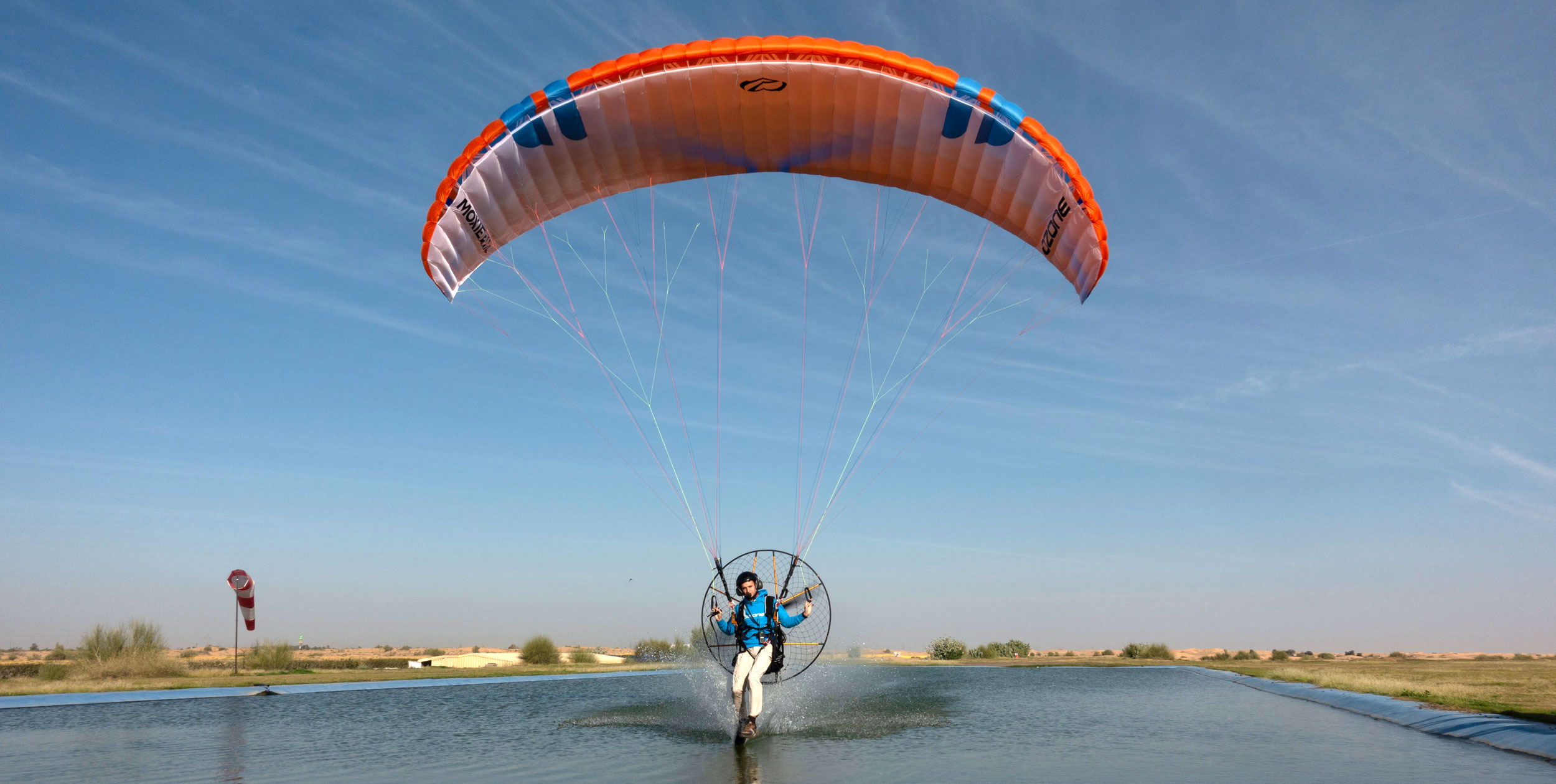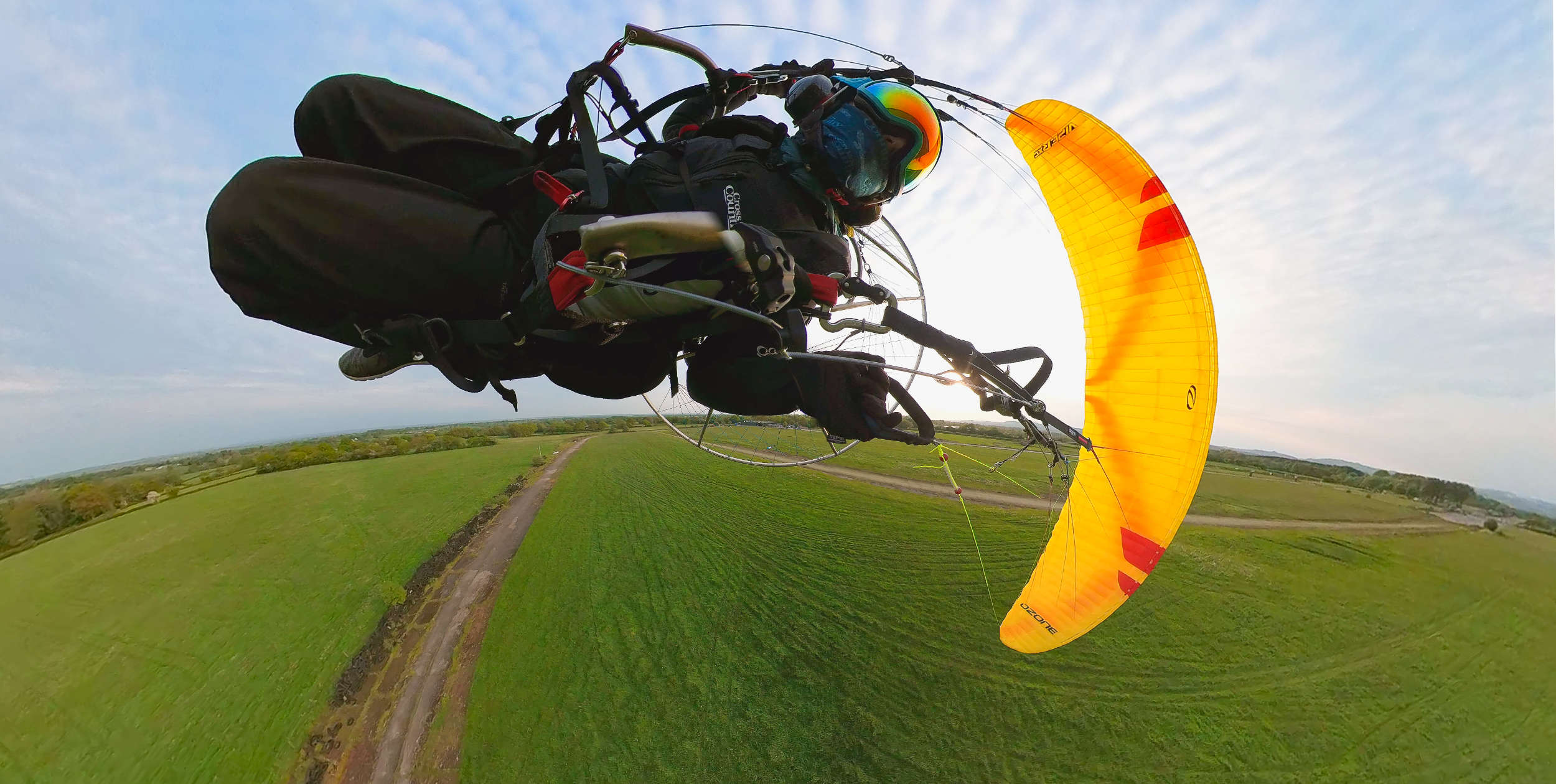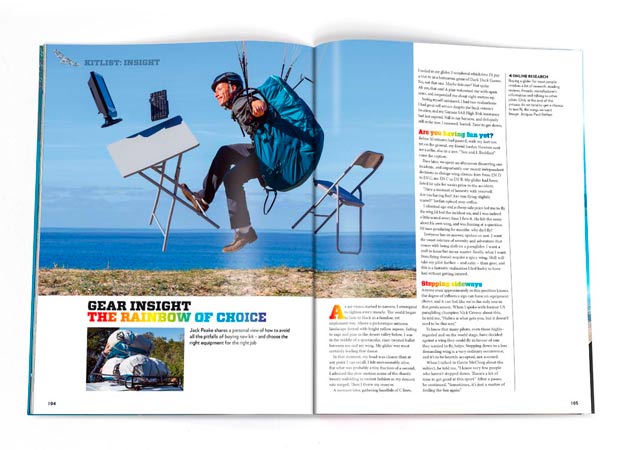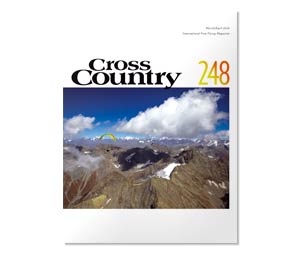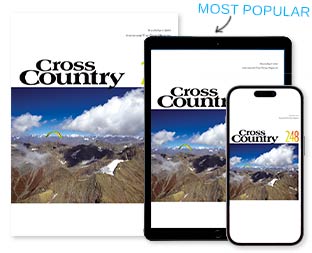Twelve years ago Rob Whittall stuck his head above the parapet and shocked the world by announcing that competition paragliders were too dangerous for us to race on. Instead, he proposed, we’d all be having a much nicer and safer time were we all flying certified wings. Serial class was the way forward, he announced.
What made Rob’s declaration so prophetic was that he, of all people, knew what he was talking about. Ex-world paragliding and hang gliding champion, world record holder, test pilot of some ten years for Airwave, Edel and Firebird, and soon to be founder of Ozone, Rob had just narrowly missed winning the previous year’s Paragliding World Cup series on his own machine the Cult, so was more qualified than anyone to make such a bold statement.
The paragliding world stood still, blinked, scratched its collective head, then broke into a schoolyard scrap that was to go on for years.
Rob’s words were heeded by many, but not by those that wielded the clout in the sport, and after a stuttering start their impetus petered out.
A decade later however, tragic events brought the paragliding world’s focus back to Serial class. Rob’s prediction has been right all along: competition paragliders were proving too dangerous for the public to fly. Open Class was nailed to the cross and Serial resurrected.
The pro-Serial world breathed a sign of relief, but practically before it had finished exhaling, another can of worms opened. Ozone, quick as ever, and almost in response to a near-unanimous announcement by the Paraglider Manufacturers’ Association at the September meeting that certification wasn’t the important measure of the wing, released the EnZo, an EN D wing that they declared wasn’t for what the public thought of as EN D pilots.
The paragliding world is standing still again, blinking and scratching its collective head.
Before we break out into another potential schoolyard ruck, Cross Country magazine got hold of Serial Class’ originator and asked him what he thinks of the latest developments. What does it all mean and where do we all go from here?
What are your thoughts on the demise of Open Class?
Lets hope it is not the demise of open class. I still see a good future for it and its role in developing ultimate performance and safety.
The thing is Open Class is an excellent platform but it needs to be an elite class where qualification to fly in it is very high. In Formula 1 only the most talented drivers in the world get a chance to drive those cars.
Open Class could continue with its own separate elite competitions. Just a few factory-nominated pilots from each brand. All World Champions, European Champions and National Champions. In my opinion that would be around 50-60 pilots. That’s those who really have the ability and skill to fly these wings. It would make for some excellent competition I think and leave the window of development wide open.
You were the instigator of Serial Class at the end of the Nineties. What happened then? Why did it never stick?
Good question and one that is easy to answer.
It was amazing how many people and brands got behind Serial Class back then, but unfortunately there were a few influential team leaders who couldn’t share the vision and pretty much derailed the train. I have to be honest, at the time it took the wind out of my sails and made me realise that even paragliding was polluted with trashy politics and behind-the-scenes canvassing.
We lost the battle, not because it wasn’t a good idea, but because those team leaders didn’t want to give up the advantages their teams held because they had factory pilots in them with the latest prototypes. Not even in the name of safety.
I felt CIVL could have actually done something good by making a ruling across the board, but they didn’t have enough backbone to do so.
From that day, the concept was doomed really because it needed everyone to be behind it for it to work properly, to the advantage of the pilots and the sport.
Do you think the events of the late 90s and early 2000s improved safety in competitions in any way? Do you think it affected pilots’ mentality?
Yes, we caused a lot of controversy and we made all sorts of people think about their own mortality and that of fellow pilots. I like to think this helped a bit and the whole topic of safety became more prominent. The powers that be did change some rules and the way we race, so as to try to reduce risks.
I think a lot of pilots were affected and most of us by the same thing. That it’s hard to watch a fellow pilot flail all the way to the ground to their possible demise and almost certain injury, without it making you feel sick.
You’ve been flying Open Class wings for 25 years and last year you were on an Ozone R11. How did it feel in comparison to the wings of yesteryear?
AMAZING! Wow what a machine that is. So easy to fly, so comfortable, handling that blows you away and performance that is just too good to be true. I’m so happy to have one. Owning an R11 is like having an F1 car in the garage. The R11 makes flying so easy, all you have to do is glide and you will get there. Don’t get me wrong, there were moments when I was tweaking at the controls, rocketing upwards in a super strong ratty French Alps thermal with all my senses alight and hanging on for dear life, but it was one hell of a buzz I can tell you.
Now that Serial class has been pretty much globally adopted, will competitions now be safer?
No, unfortunately, not really. For sure we have the potential to reduce the risk, but you will never eradicate it. Flying paragliders at the top end of the flight envelope will always be dangerous no matter what we do.
In competition we are frequently low, pushing at full speed and close to rock faces. The outcome of a collapse at a moment like this is more a question of luck than skill, but you better hope you got a lot of both for the best result!
To make competitions safe we would all have to stay on the ground and play cards instead. But let’s face it, danger is good and makes things exciting but the important thing is pilots recognise the dangers and respect them and their own ability to deal with these situations.
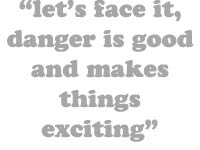 Perhaps another part of the problem is the advent of all this new technology in terms of GPS and vario connection. Once upon a time we used to have to actually navigate in the air, fly into the correct sector, take a photo and then head off to the next turnpoint following a map. Today’s instruments tell you where the thermal is, where to go, when you can glide there and how fast to glide. Taking all these calculations away from the pilot means that all there is left to do is race. Push the speed bar and race! A lot of the thinking has been taken away. It’s a terrible shame. We’re really losing connection and understanding of the air and situation around us.
Perhaps another part of the problem is the advent of all this new technology in terms of GPS and vario connection. Once upon a time we used to have to actually navigate in the air, fly into the correct sector, take a photo and then head off to the next turnpoint following a map. Today’s instruments tell you where the thermal is, where to go, when you can glide there and how fast to glide. Taking all these calculations away from the pilot means that all there is left to do is race. Push the speed bar and race! A lot of the thinking has been taken away. It’s a terrible shame. We’re really losing connection and understanding of the air and situation around us.
All the info we need today is being given to us on a plate instead of us having to accumulate it. Just as in Formula 1, electronics have to be limited because they know that they can make a car much faster and easier to drive if it’s full of electronics that take all the driver errors out of the equation.
I think it’s about time we went back to real navigation with only an altimeter, vario and a data logger allowed. For sure goal would be reached with slower times and most glides would be taken with more reserve height and less speed.
What else do you think we can do to make competition flying safer?
The only real way is to have better standards by which pilots qualify – the higher the standard the better the pilots you’ll have. Unfortunately today we are a performance-lead society where success in any field is only measured in one way: are you number one or not? If you are we bow at your feet and make you a hero.
Pilots have lost the value of the personal satisfaction of flying. I’ve seen pilots kicking and spewing like little five-year-olds who have just been told they’re not getting any ice cream, just because they have missed goal or landed out.
Imagine four hours in the air, battling to make the goal, but you miss. Yet you find no personal satisfaction from the fact that you did your best and had a great flight anyway. I laugh at the sore losers because one thing is for sure you need to be a great loser if you are ever to be a winner.
If pilots were more personally satisfied with their flights rather than just the results then things would be safer because pilots wouldn’t be racing above their ability.
If you are good enough to be vying for the top spots then go for it, but, be realistic, if you are gunning for 33rd position, then chill out, relax and enjoy the flight because you can only be a personal winner.
Talk at the PMA meeting in September was of dropping certification entirely and relying on manufactures’ recommendations. Do you think that is a good way forward?
No. It’s productive to have an external power that sets the bar rather than self-regulation. Having said that it’s in the interests of all manufacturers to make safe Open Class wings, as a body count normally doesn’t do business any good at all!
The Ozone Enzo has been pitched as an EN D wing unsuitable for what we perceive to be EN D pilots. What does it mean?
The first thing here is that a comp wing can pass certification, which proves two things.
Firstly, that Ozone has made leaps in performance and safety because to get a wing like that to pass certification is testament to the amazing development they have made in safety and comfort in flight.
Secondly, that the certification process has worked. The EnZo has been designed to achieve the highest possible performance, yet still be certifiable.
That Ozone openly says it is not for all pilots means people have to adjust to the idea that EN D could be too much for them.
It would be a misconception to believe that because a wing has a certain level of certification that you can fly it. Remember the DHV 3 rating? Nobody wanted to fly those wings because we all knew that they were hot to handle.
There’s a lot of talk of folding lines and that manufacturers may be using them unnecessarily to soften their wing’s reaction during collapses. Is this possible?
If you understand the development process you will realise that this argument is very weak at best.
Today’s wings need lines added to make the correct collapses, with the right amount and angle for certification. Without these extra lines it is just not possible to achieve the type of deflation required. As far as the rumour that it might be being manipulated, we have to remember there is no advantage for any manufacturer out there to have pilots crashing on their wings. Good safe gliders make brands successful and bad unsafe gliders kill your business.
I believe most of the big players know this and that is why safety is such a big part of the manufacturer’s image today.
To me the certification process is just fine and stringent enough. I think it’s cool that Ozone has pushed the boundaries again and openly admits that it is not a wing for everyone. It’s the responsibility of the pilot to recognise their own level and ability and make their decisions based on that.
What do you think should happen next – in respect to competition paragliding and certification – and what do you think will actually happen?
I hope that they can go forward hand in hand. There is no reason why not. From time to time things will need to be assessed and perhaps changed to accommodate progression but as far as I can see it can only be a good thing. We all need to remember that accidents will always happen and that we are not in control of the universe.
Death is a sad part of life but it happens all day, every day and sometimes it happens in your world. But overreaction is not the solution, accept, learn, move on!
Do you think competition results are used for commercial gain more now than in the past?
To me it would appear that competition is now fiercer between brands than it is the pilots.
I don’t know how or when it happened, but the sport and the world in general have become so performance orientated. Today, brands seem to win competitions, the pilots that have skilfully piloted the wing pale into insignificance compared to the amount of fuss that is made of the glider.
Look at any brand’s website, you see results and how amazing their new wing is, how it wins competitions. No place is fun or pleasure at the forefront of any promotion these days. I think this is a shame because to me the idea of flight is first and foremost the pleasure of the act of flying. The feeling, the buzz of being off the ground, and gliding through the sky should be soul of the sport and not what goes higher, further, faster!


